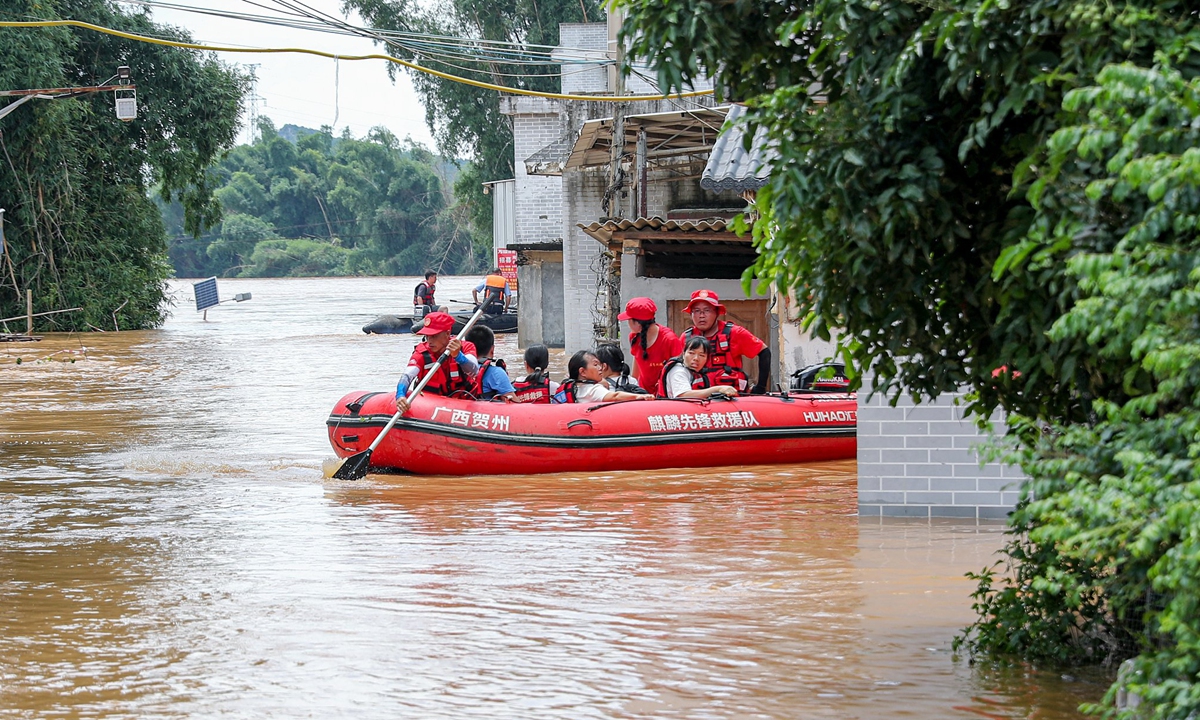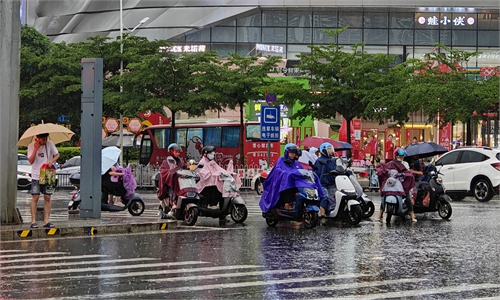Rare rainy season causes Guangxi direct economic losses totaling $194.5 million, affecting 911,000 people

Photo: CFP
Since the beginning of the rainy season in April, South China's Guangxi Zhuang Autonomous Region has experienced complex and volatile weather, frequent extreme weather events, and rare levels of precipitation. Almost all cities and counties in the region have been affected to varying degrees, with 911,000 people affected and direct economic losses totaling 1.41 billion ($194.5 million), local authorities reported on Saturday.
Since the rainy season began, Guangxi has experienced over 210 geological disasters, local authorities said. Cities in the autonomous region such as Nanning, Beihai, Qinzhou, and Yulin have suffered severe urban flooding, while Cenxi in Wuzhou experienced sudden flash floods.
Downstream of the Qingwan River in Yulin, there have been widespread floods, and Jingxi in Baise experienced urban and rural waterlogging.
Up to now, there have been four instances of heavy rainfall known as "dragon boat rains," with an average precipitation of 241.7 millimeters across the region, which is 20.3 percent higher than the same period in previous years.
Starting from Thursday, Guangxi has entered a new round of rainfall, mainly affecting the northern and central parts of the region. According to hydrological departments in Guangxi, the Xi River is expected to experience major flooding in the Pearl River Basin, while the Liu River and Gui River may face flooding in Guangxi, making flood prevention and disaster relief efforts urgent.
This also marks the first occurrence of designated floods in three rivers since 2022, highlighting an exceptionally severe flood prevention and disaster relief situation.
China's State Flood Control and Drought Relief Headquarters has initiated a Level IV emergency response for Guangxi and dispatched working groups to guide flood control and disaster relief efforts.
Guangxi has also activated a Level IV emergency response, pre-positioning emergency response teams and communication equipment in Guilin, Liuzhou, Baise, and other areas.
On Friday, heavy rains hit most areas of Rong'an county in Liuzhou, causing landslides along several sections of the local highway and affecting low-lying farmland, bridges, fruit trees, and other areas.
Global Times

